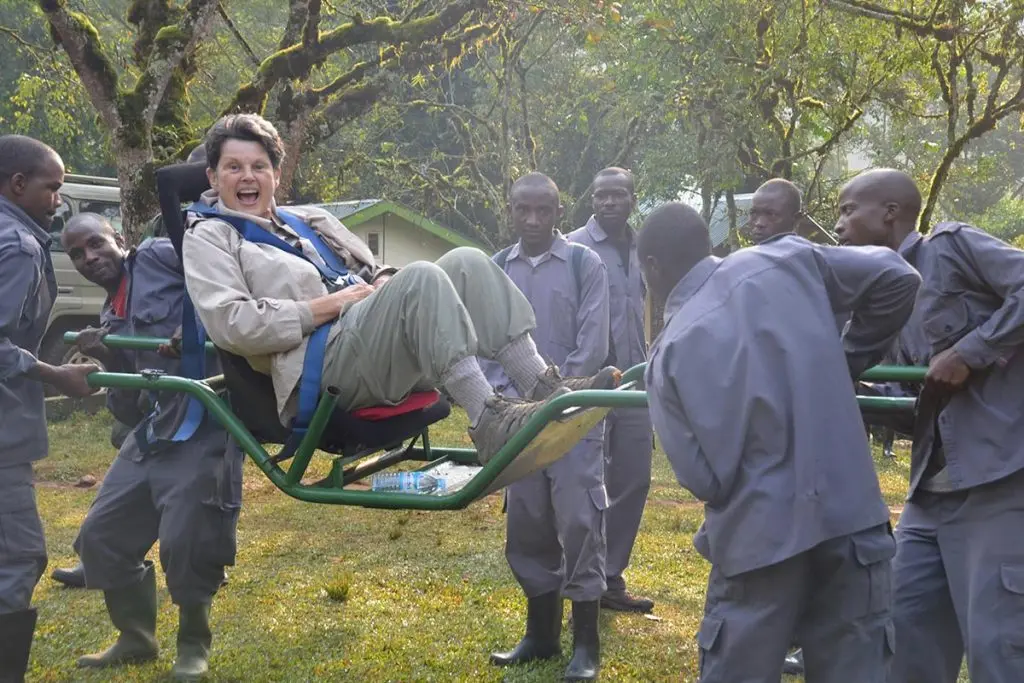What is the Role of a Porter During Gorilla Trekking
What is the Role of a Porter During Gorilla Trekking, What is the rationale for using a porter during gorilla tracking? – Hiking into the dense forest to observe Mountain Gorillas in their natural environment is an exhilarating experience that necessitates a certain level of physical fitness. Upon completing the reservation of your Gorilla permit for the tracking experience, you will then proceed to engage in substantive planning.
It is now necessary for you to organize materials such as passports and other considerations for your packing list. Moreover, it is essential to employ a porter. Depending on your physical fitness level and the quantity of items you plan to carry during a trek, porter services are typically required. Participation in this delightful event requires a reasonable degree of fitness and proper preparation to enhance enjoyment throughout your walk.

What is the Role of a Porter During Gorilla Trekking, Engaging a porter is a crucial decision, since porters facilitate a more manageable and enjoyable trekking experience. Another reason is that it facilitates local communities’ benefits from eco-tourism, which subsequently encourages their support for gorilla conservation and tourism in the region. Several of these porters are ex-poachers who have recognized the significance of gorilla and wildlife conservation for their communities and have proactively engaged in enhancing conservation efforts.
Employing porters is an effective method to assist them while ensuring your safety on a trip in the dense rainforest. Typically, they labor for gratuities and are not formally employed at the park; providing a tip is a significant gesture that can assist them in fulfilling their basic necessities at home.
They facilitate the transport of your belongings, including water, snacks, and photographic equipment, while also aiding your navigation across tough terrains in pursuit of your Gorilla family in the wild. A porter can be hired for USD 15-20 for the entire duration; however, it is also customary to provide a gratuity to acknowledge the quality of service rendered. Porters are available at the park headquarters, contingent upon the country you choose to visit for your hikes.
Mountain gorilla tracking occurs exclusively in Uganda’s Bwindi Impenetrable Forest and Mgahinga Gorilla National Parks, located in the southwest, as well as in Volcanoes National Park in northwestern Rwanda and Virunga National Park in the Democratic Republic of Congo. Currently, just 1,080 Mountain Gorillas remain globally, and they can solely be observed in their natural habitat, as they are never housed in zoos.
A journey to observe these intriguing big apes constitutes a remarkable wildlife encounter that occurs once in a lifetime. These critters inhabit altitudes ranging from 2200 to 4300 meters, necessitating a certain level of physical fitness to do an entire journey.
Consequently, it is essential to be physically prepared, since this will enable you to familiarize yourself with the landscapes and terrains you are likely to encounter. Prior to your expedition, be cognizant of the dense rainforest and the sometimes muddy and steep inclines encountered along the routes. Your walk may endure for approximately 2 to 8 hours, contingent upon various elements, including the location of the gorillas, the characteristics of the ecosystem, and your trekking pace.
Prior to the actual expedition, ensure that you are thoroughly equipped. Utilize the elevated terrain in your native country for training, and ultimately, you will encounter no difficulties throughout arduous climbs.
In conclusion, employing a porter for gorilla tracking is vital for anyone planning to do a gorilla trek in Africa, given that this expedition traverses arduous terrains and dense foliage.
What is the habitat of gorillas?
Mountain gorillas inhabit Bwindi Impenetrable Forest National Park in Uganda and the Massif Virunga Conservation Area. Mgahinga Gorilla Park in Uganda, Volcanoes National Park in Rwanda, and Virunga National Park in the Democratic Republic of Congo constitute the Virunga Massif Conservation Area. Currently, there are 1,080 Mountain Gorillas, with almost half residing in the jungles of Bwindi Impenetrable Forest National Park.
What are the rates for Gorilla Permits?
A valid Gorilla permit is required to observe the endangered species. The cost of a gorilla permit in Uganda is USD 700 for foreign non-residents, USD 700 for foreign residents, and 250,000 shillings per person each trip for East African citizens. The cost of a gorilla permit in Rwanda is USD 1,500 for all travelers, however in the Democratic Republic of Congo, it is USD 450.
It is advisable to book gorilla permits as early as six months prior to the trekking date for effective planning. Ultimately, a porter and a walking stick will enhance your gorilla trekking experience. Reserve a Uganda gorilla trip today to encounter endangered gorillas in their natural habitat and relish this once-in-a-lifetime adventure.
At Gorilla Trekking in Africa, we are wildlife experts, guided not by commissions but by the principle of positioning individuals optimally in time and space. Upon contacting us, you will uncover the distinctive qualities of our excursions. Our award-winning safaris are unparalleled by other firms. A destination consultant will contact you; we do not engage in aggressive sales tactics, but you will receive plenty inspiration and guidance, along with assistance in planning your next journey.
